[Elephantview] Christie’s Shanghai Autumn Auctions 2017: A Brand New Interpretation of Contemporary Scholars’ Studio
Today, let’s focus on the upcoming Christie’s Shanghai Autumn Auctions 2017 on the base camp of the Elephantview. Since Christie’s first auction in Shanghai in September 2013, we have watched and reported on every auction. If you like art, it is extremely lucky to be born in an international metropolis like Shanghai which is known as the “magic city” of China. You can enjoy top international art auctions in your hometown. What are the highlights of this Christie’s Shanghai Autumn Auctions? First, let’s watch a video.

In this season’s sale, we are most impressed by the grand, elaborate and brand new theme “Contemporary Scholars’ Studio” which will make its debut in the auction titled [First Open|Shanghai]. A total of 20 pieces of work representing different scholars’ aesthetic taste of life will be displayed in this sale, which is definitely a redefinition to the traditional “scholars’ studio”.
Referring to “scholars’ studio”, Chinese talk more about the classic Chinese elements in it and it has been repeatedly interpreted by many foreigners who love Chinese culture. Let’s look at some examples.
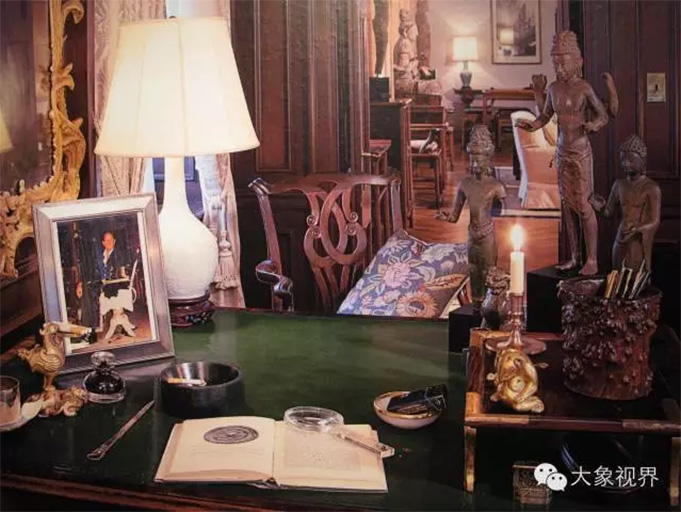
This is Scholar Robert Hatfield Ellsworth’s apartment on Fifth Avenue in New York where everything explains the famous saying: “Don’t collect it, if you won’t stay with it every day”.
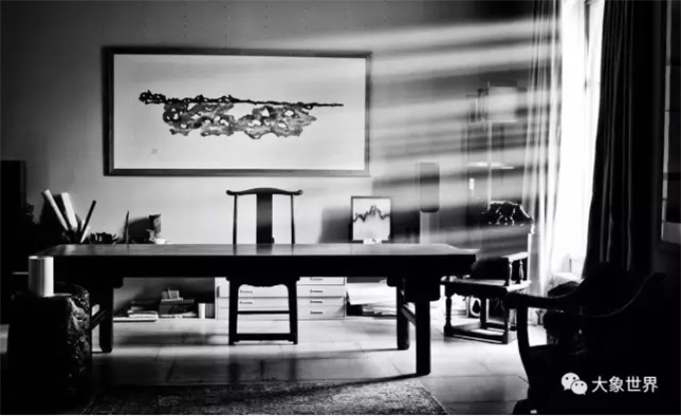
Hugh Moss, master of the Water, Pine and Stone Retreat, works in his studio in a 15th-century building where you can see through its western appearance to comprehend its eastern soul.
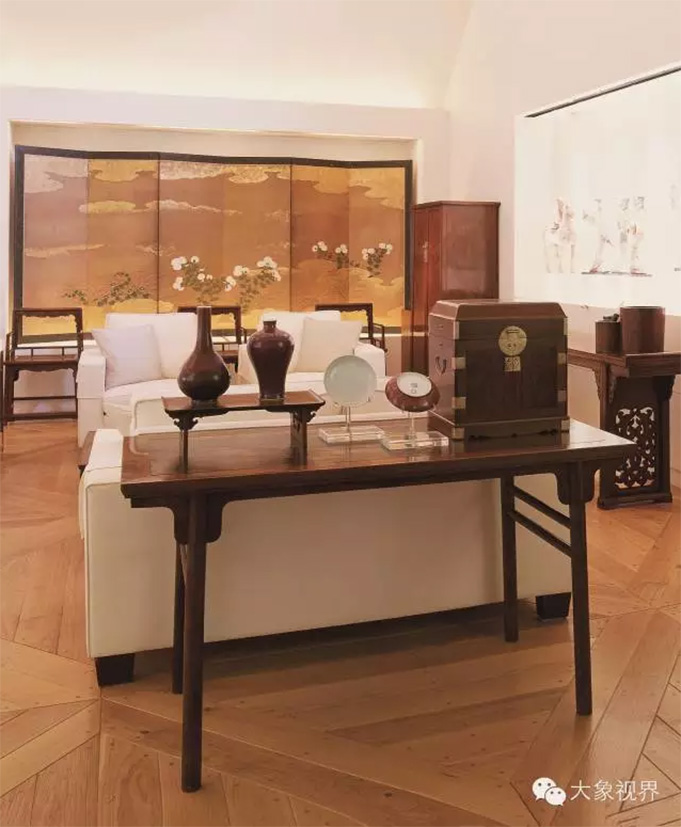
Philippe De Backer, Belgian artist, decorates his studio with Ming-style furniture and named it “Lü Ming Shi”, which means “living in the Ming Dynasty”.
In the studios mentioned above, traditional Chinese cultural relics, Western furniture and even historical relics from other cultures are presented flawlessly in the same space without any sense of conflict. And these spaces are all created by Westerners.
Nowadays, many people get their ideas about traditional Chinese scholars’ studios from Treatise on Superfluous Things written by Wen Zhenheng in the late Ming Dynasty. Treatise on Superfluous Things was finished in 1634 (the 7th year of the reign of Emperor Chongzhen) with 12 volumes, namely the display of chamber rooms, flowers and trees, water and stone, poultry and fish, calligraphy and painting, tables and sofas, utensil, location, clothes, ship and wagons, vegetables and fruit, and Chinese tea. The book reveals an ideal traditional scholars’ studio.
However, “Contemporary Scholars’ Studio” curated by the international auction house Christie’s in Shanghai totally overwhelmed the idea conveyed by Treatise on Superfluous Things. There are 30 works of art featuring different scholars’ aesthetic taste of life, including furniture, bonsai, ink and wash painting, jade ware, photography, porcelain, red ware and flower containers. These works are contemporary art treasures provided by collectors and artists from China, Japan and America. What Christie’s seeks to demonstrate is not only a traditional Chinese study, but breakthrough in the kinds and regions of the so-called “scholars’ studios”. A comfortable and exquisite scholar’s studio has no national or geographical boundaries. In this respect, our ancestors have ventured way ahead of the world.
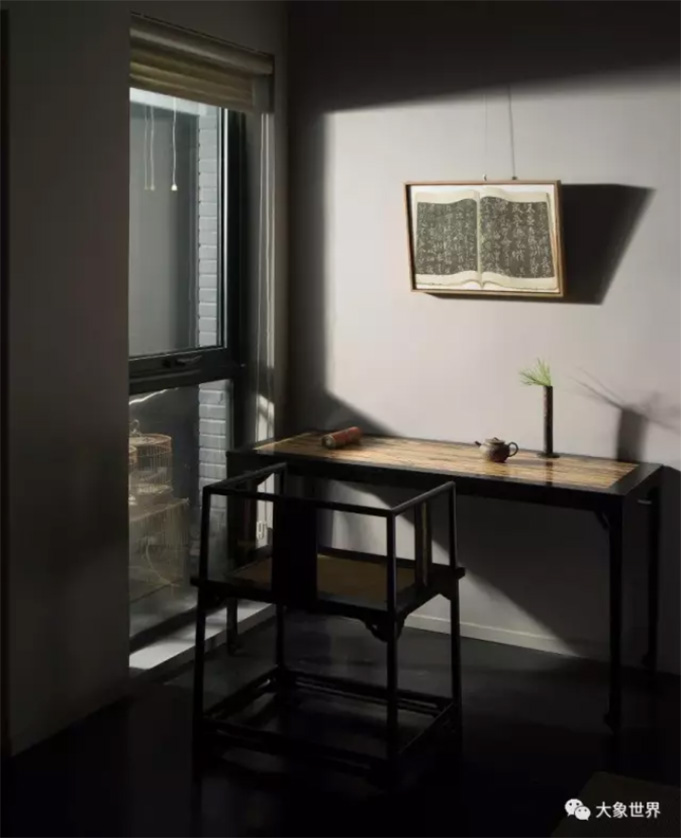
We delivered a special interview of Scholar Liu Shan, curator of “Contemporary Scholars’ Studio” by Christie’s, to talk about this special theme.
According to Scholar Liu Shan, the “Contemporary Scholars’ Studio” is neither a simple Chinese study, nor a simple combination of Chinese and Western studies, but a genuinely people-oriented space.
Scholar Liu Shan said that people now always see Treatise on Superfluous Things from the Ming Dynasty as an academic standard. However, the fact is that it was not a purely academic thing because people at that time would also consider commercial value. Therefore, we don’t have to indiscriminately copy ancient classics, such as Treatise on Superfluous Things to make the ideal scholars’ studio from a purely academic perspective.
The “Contemporary Scholars’ Studio” is by no means a formalistic show. Nor does it follow any fixed format, rather it starts from human needs and breaks through the differences and misunderstanding between Chinese and Western cultures. He observed: “It is hoped to demonstrate the jing (mind), qi (energy) and shen (spirit) of contemporary humanities and arts in works. As long as a work fits in the artistic atmosphere of the space harmoniously, the form does not matter anymore”.
As long as you can create an aesthetically harmonious space, you don’t have to stick to one pattern. This is the idea and tenet of the “Contemporary Scholars’ Studio”, and it will also be the new scholars’ spirit and their aesthetic orientation of our times.
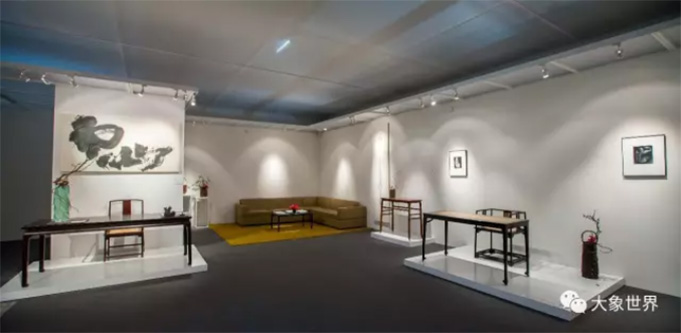
Let’s take a look at the preface written by Scholar Liu Shan for the “Contemporary Scholars’ Studio” in Christie’s Shanghai Autumn Auctions 2017.
Let’s watch a video about Scholar Liu Shan. Maybe it will give you more ideas of “contemporary scholars’ studios”.
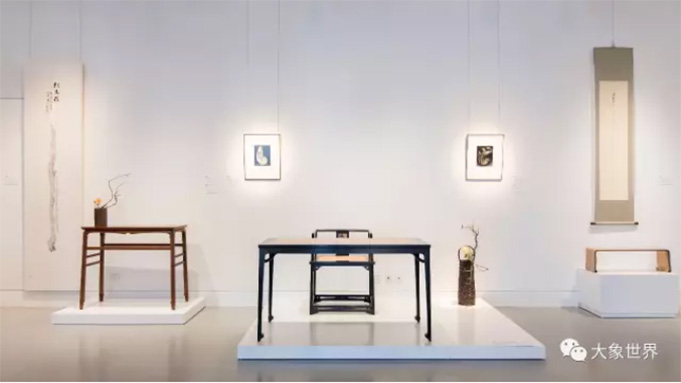
The art works displayed in the “Contemporary Scholars’ Studio” of Christie’s Shanghai Autumn Auctions 2017 include furniture, bonsai, ink painting, jade ware, photography, porcelain, red ware and flower container, most of which are collections from our friends and teachers. We also interviewed them and invited them to share their understanding of the “Contemporary Scholars’ Studio”. Next, let’s enjoy these works of art in space.
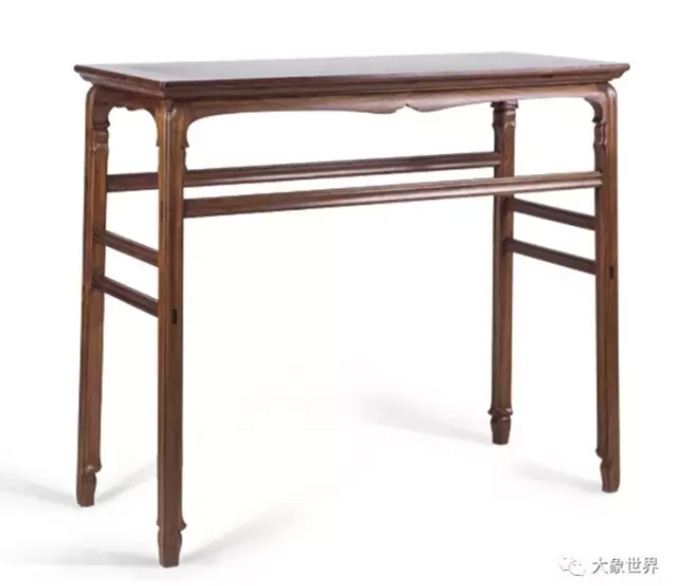
Lot 157
Ma Cola (China, B. 1948)
A Song-style Lute Table
96.8×41.2×84.2 cm
Estimate: RMB 45,000-70,000
This lute table is an elaborate replica of a Song-style one from the “C. L. MA Collection: Traditional Chinese Furniture from the Greater Shanxi Region”. It is made of Burma tulipwood (tamalan), and has been rigorously dehydrated. In order to achieve the aesthetics of Song and Yuan Dynasty, this collection is handmade by senior technicians under the supervision of Mr. Ma.
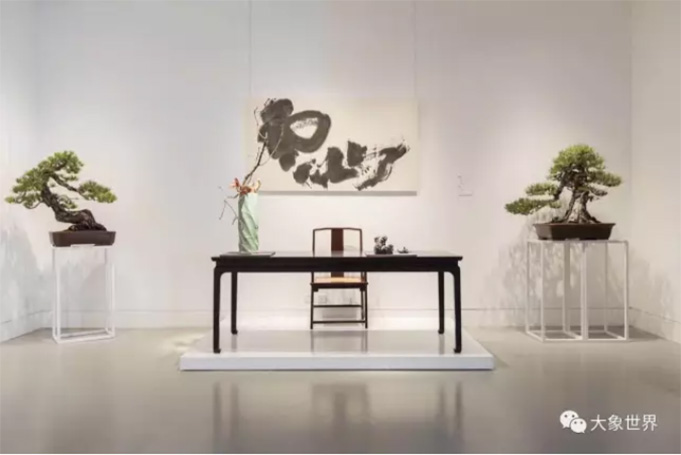
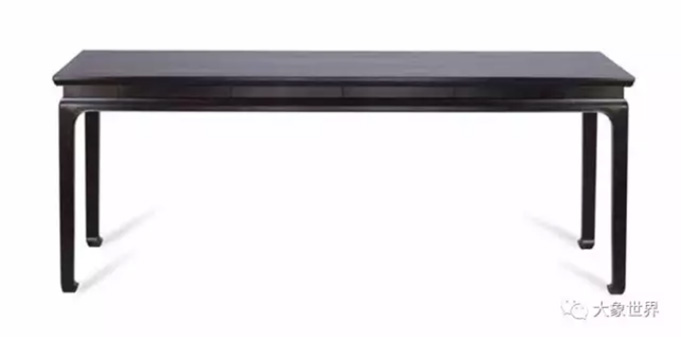
Lot 158
Zhang Jinhua (China, B. 1968)
A Jichimu High-waisted Drawer Tea Table
Estimate: RMB 50,000-80,000
Under the supervision of Mr. Zhang Jinhua, the Jichimu High-waisted Drawer Tea Table referenced the standard structure of Ming-style high-waisted drawer tea tables. For the convenience and display of operation and posture of the tea master, the maker deliberately lowered the height of the whole table, which also brings a certain degree of comfort to tea guests, revealing the people-oriented spirit of this theme activity.
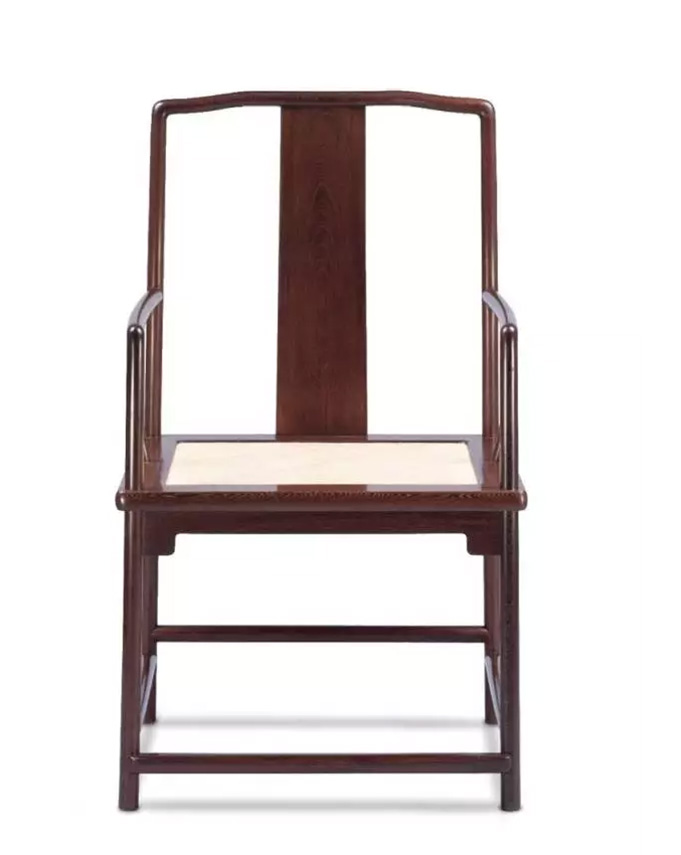
Lot 159
Zhang Jinhua (China, B. 1968)
A Jichimu Official Hat Armchair
56×49×98 cm
Estimate: RMB 28,000-40,000
The armchair, in sleek soft curves, is made of roundwood. The most stunning feature of the armchair is that there is no pedal or hunchback stick under the horizontal stick, highlighting the simple beauty of the Ming-style furniture.
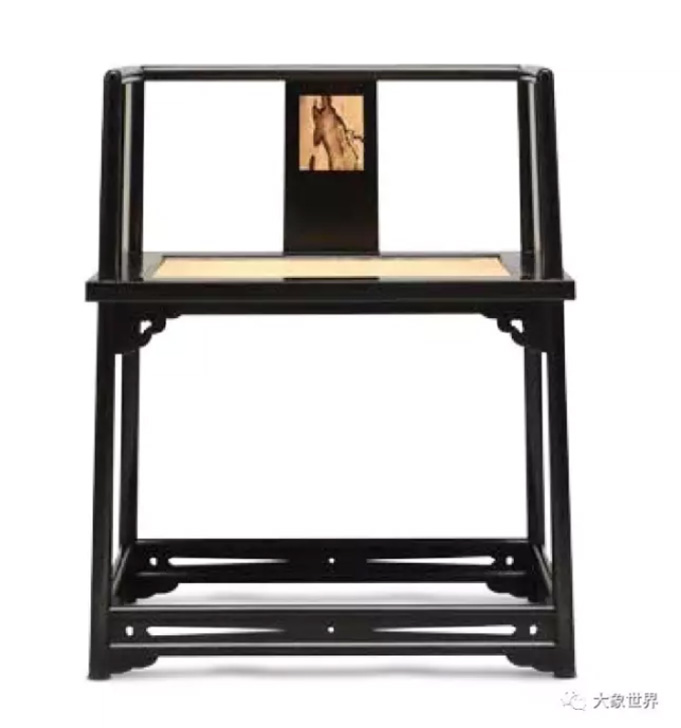
Lot 160
Shen Ping (China, B. 1954), Zhou Mo (China, B. 1960)
A Black Persimmon-inset African Blackwood Chair
64.5×51×80 cm
Estimate: RMB 80,000-120,000
As a typical armchair style, the shape of this chair often appears in paintings of the Song Dynasty. The natural patterns on the backboard and sideboard come unexpected yet ingenious.
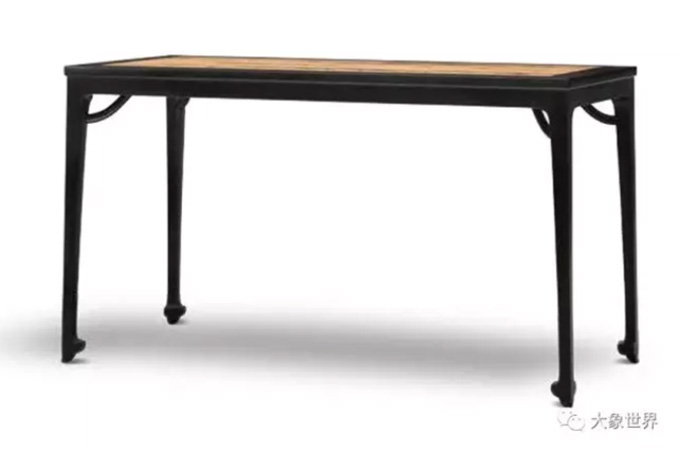
Lot 161
Shen Ping (China, B. 1954), Zhou Mo (China, B. 1960)
A Black Persimmon-inset African Blackwood Rectangular Desk
139×60×78 cm
Estimate: RMB 150,000-250,000
This one is a variant of traditional rectangular desks. It attracts people’s attention to its upper part through a change in its form, with the ruyi (cloud) pattern on its feet to balance the upper part. The desktop is made of Ziricote, on which black dots are scattered among black strips just like the ice melts in a pond in spring. What an ingenious design!
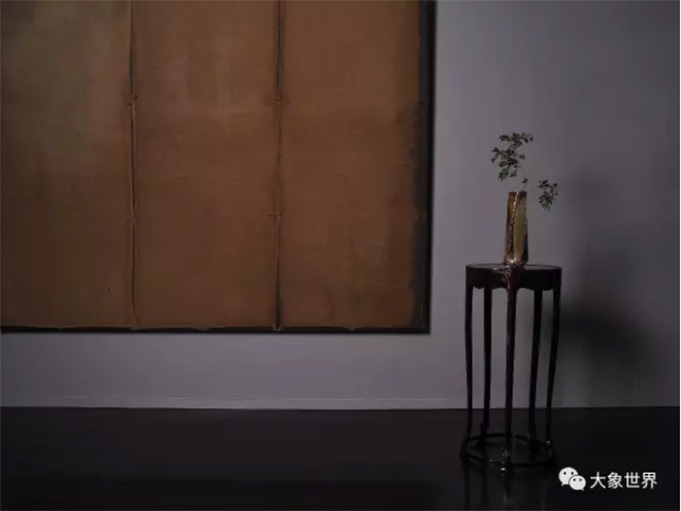
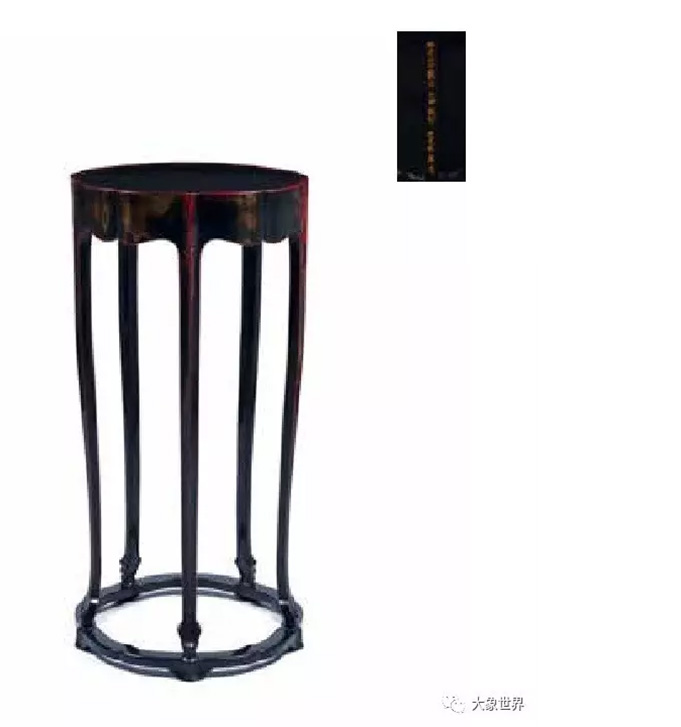
Lot 163
Shen Kelong (China, B. 1964), Shen Ping (China, B. 1954)
A Lacquer Incense Stand
43×43×85 cm
Estimate: RMB 100,000-150,000
The combination of the Five-foot round incense stand and lacquer painting gives rise to the beauty of movement and stillness, classical appeal and elegance.
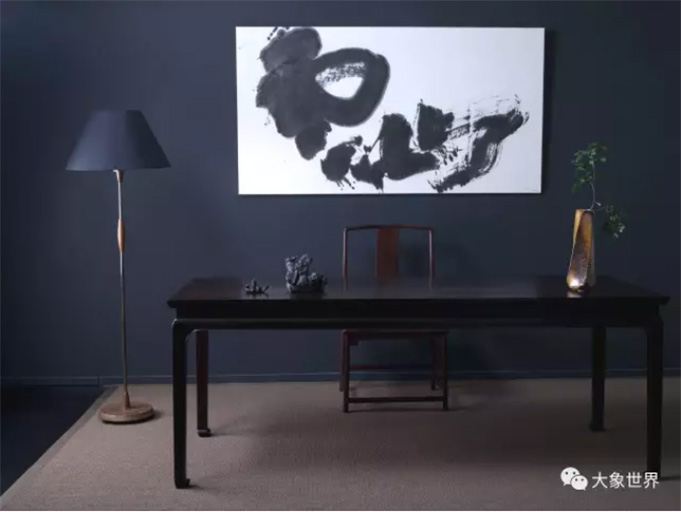
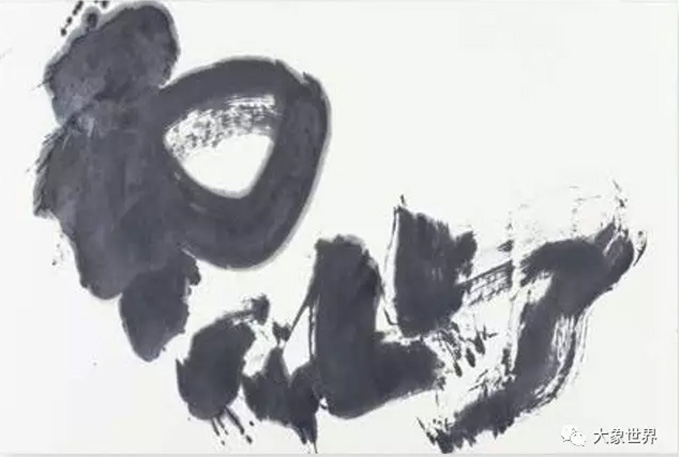
The combination of the Five-foot round incense stand and lacquer painting gives rise to the beauty of movement and stillness, classical appeal and elegance.
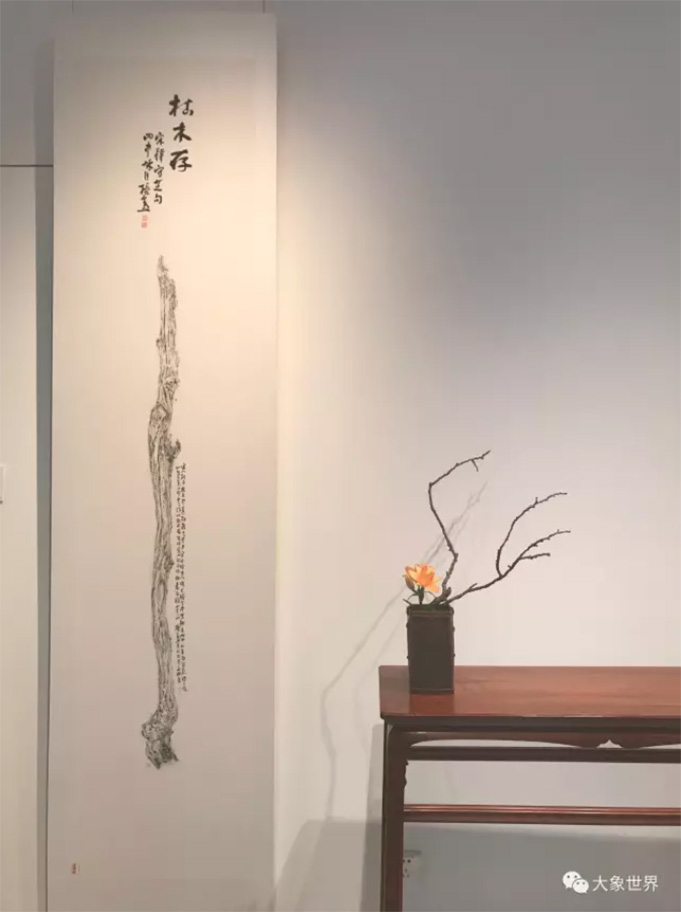
Lot 164
Chen Hui (China, B. 1960)
A Yingta on Paper
65×260 cm
Estimate: RMB 15,000-18,000
“People of the Song Dynasty can cultivate their temperament and improve their characters through preserving dead wood. This special technology is gradually lost after the collapse of the Song Dynasty. In memory of it, people use Mota (ink-rubbing) and Yingta to retain the imprint of dead wood. In the autumn of 2016 (the year of monkey), I wrote three poems respectively named Free Spring, Cold Cloud and the Preservation of Dead Wood, all inspired by verses of the Song Dynasty. Viewers should try to comprehend its meaning from this perspective”.
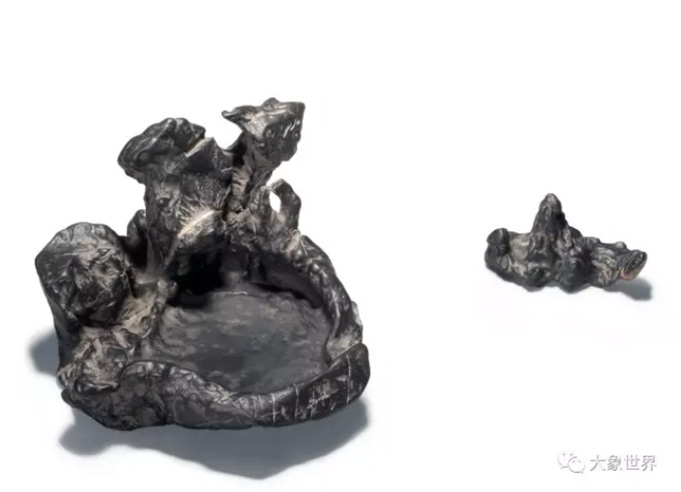
Lot 168
Cheng Qi (China, B. 1956)
Lingbi ‘The Third’ Scholar Rock
Inkstone: 15×16.5 cm
Mountain: 3.9×5.4×9 cm
Estimate: RMB 50,000-80,000
Born in Shexian County, Anhui Province, Mr. Cheng Qi like carving traditional view stones. His works radiate with the charm of nature, humanity and artistic conception.
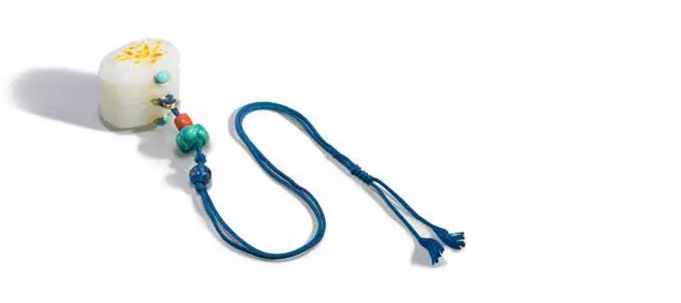
Lot 173
Yang Zhanxian (China, B. 1968)
Hotan Jade Pomander
5×4×4 cm
Estimate: RMB 300,000-500,000
Made out of exquisite jade, the Pomander is subtly designed in such a way that it reminds people of petals via the natural hue of the jade pebble.
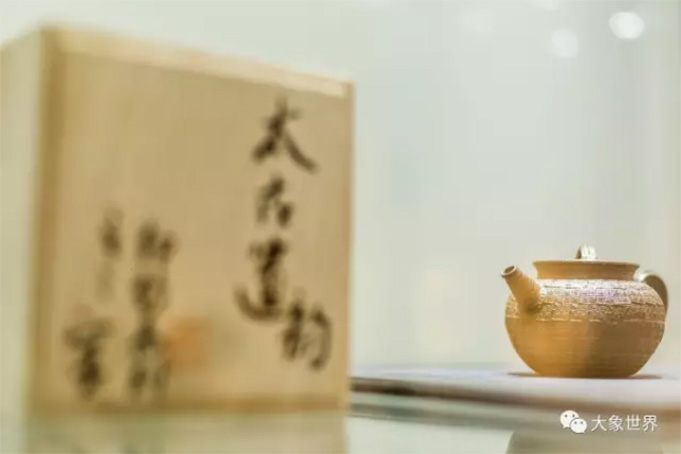
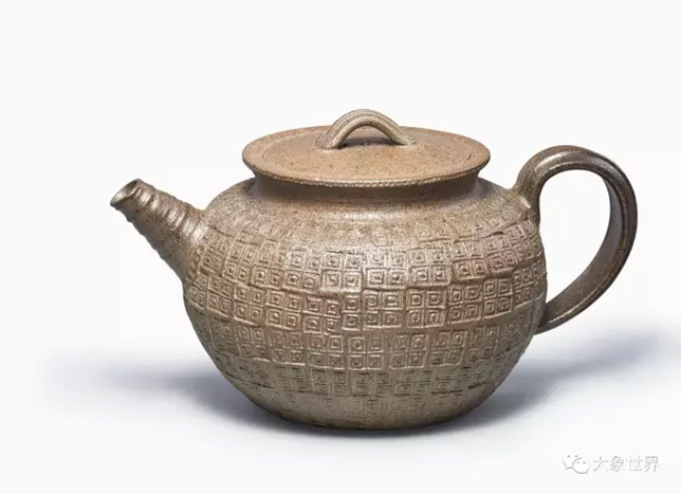
Lot 174
Gao Zhenyu (China, B. 1864)
A Warring States Embossed Yixing Clay Teapot (2017)
8.5×10 cm, Volume 330 cc
Estimate: RMB 60,000-120,000
The dark-red teapot is made of Yixing clay at a high temperature and decorated with “seal pattern” which was frequently used in ancient Yingxi Pottery during the Warring State Period. From the place to the clay to the technique, nothing has changed over 2,000 years, rendering an opportunity to talk to ancient people.
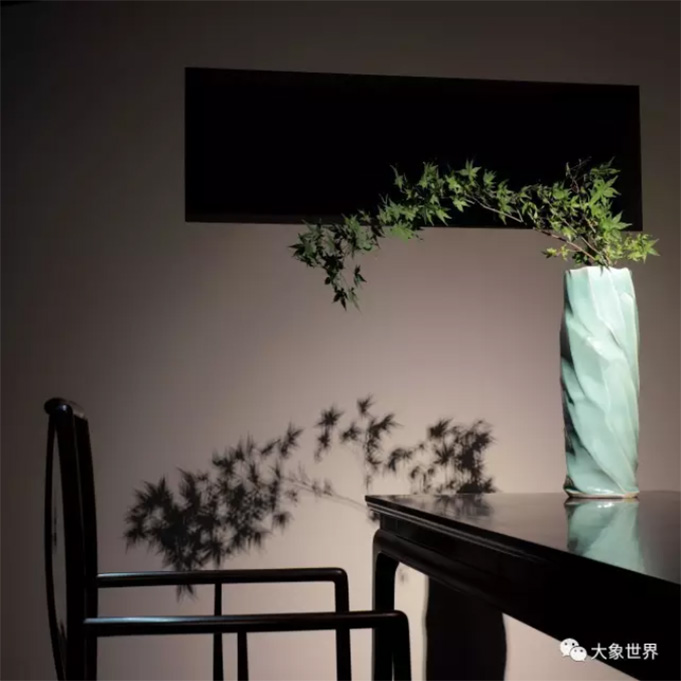
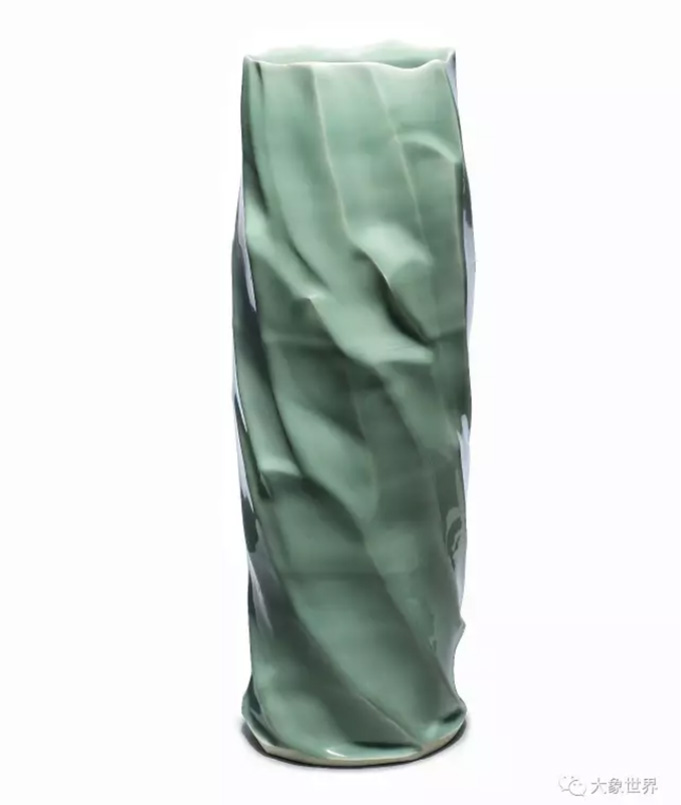
Lot 176
Gao Zhenyu, A Kungang Jade-inspired Celadon Floral Vase (2006)
15×50 cm
Estimate: RMB 150,000-200,000
Exhibited: National Art Museum of China, Jade form Kungang- Gao Zhenyu Ceramic Art Exhibition in 2006.
As the flowing clay is sealed by light greenish-blue ceramic glaze, the essential beauty of the clay is sealed into eternity.
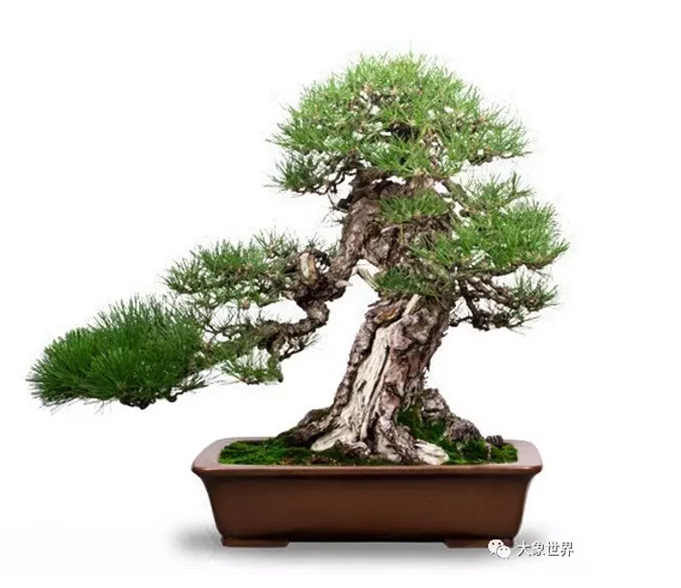
Lot 179
Kunio Kobayashi (Japan, B. 1948)
Japanese Black Pine, Age: 180 years old
105×93 cm
Estimate: RMB 500,000-700,000
